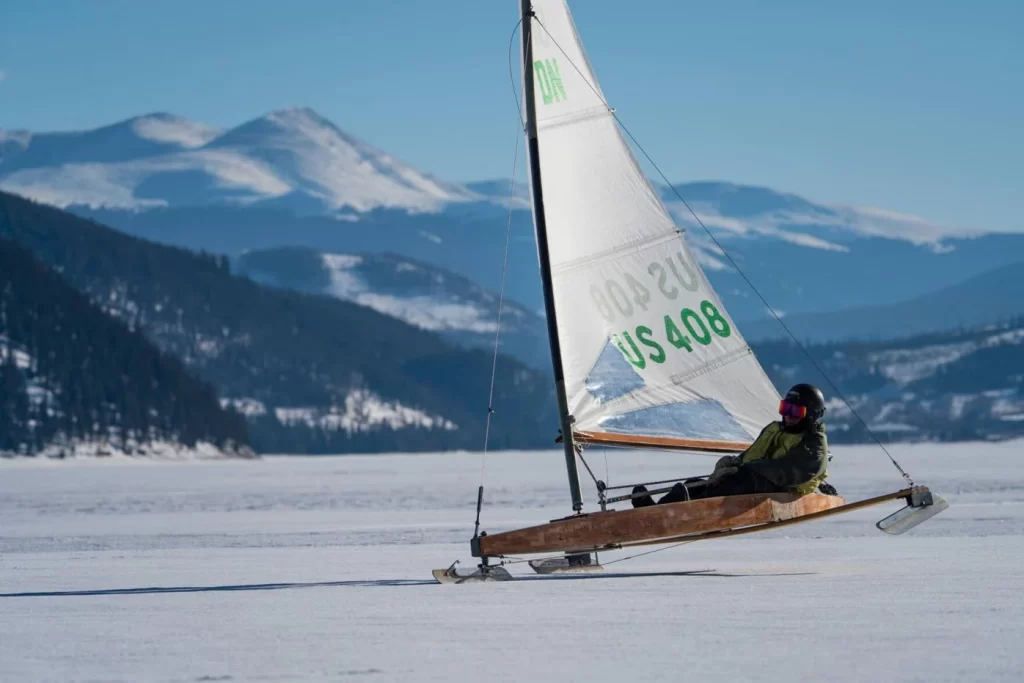
- Ice sailing traces its roots to the Dutch.
- The Poughkeepsie and Hudson River Clubs were prominent ice-yachting organizations.
- The ice boat has become smaller, sleeker, and faster over the years.
- Ice sailing continues to grow in popularity, especially in North America and Canada.
Previously on Lake Homes Lifestyles, we discussed all the ins and outs of ice sailing. But did you know this modern winter sport has some fascinating historical roots? In fact, some archeologists believe that ice boats originate from the Scandinavian region as far back as 2000 B.C. However, little evidence exists to support this claim. More concretely, the ice sailing we know today dates back to the 17th and 18th centuries on the Gulf of Riga and in the canals of the Netherlands. The Dutch were the grandfathers of ice boating, attaching a plank and runners to a traditional sailboat to navigate their country’s frozen canals. However, ice sailing’s history does not end there, as it has become more prominent in North America over the past two centuries. Read on to learn the exciting history of this invigorating winter sport.
Where Were the First Ice Sailing Clubs?
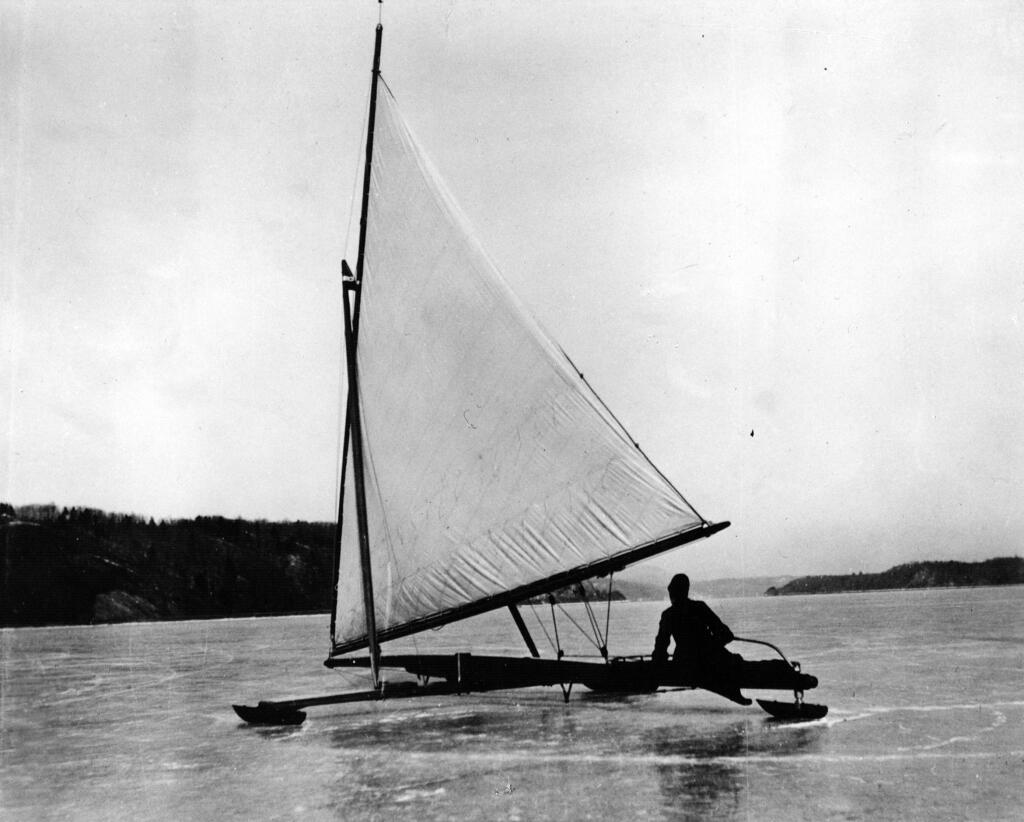
Ice sailing’s growing popularity in the 17th and 18th centuries led to the formation of boating clubs in the 19th century. The Poughkeepsie Ice Yacht Club in New York was the first club to organize, forming in 1865. Then, the Hudson River Ice Yacht Club grew from the Poughkeepsie Club and was organized in 1870. The wealthy in the Hudson River area attached quickly to the fast-paced fun of ice yachting, commissioning architects to construct faster and more attractive ice vessels. One of these wealthy families was the Roosevelts. In fact, former U.S. president Franklin Delano Roosevelt spent many wintry days of his Harvard years on the ice boat HAWK—now preserved at the Home of Franklin D. Roosevelt National Historic Site.
In Europe, other ice boating clubs were organized, such as a Swedish Club founded in 1901. And in 1928, Latvia, Lithuania, Estonia, Sweden, Austria, and Germany joined to create the European Ice Yachting Union.
The Evolution of the Ice Boat
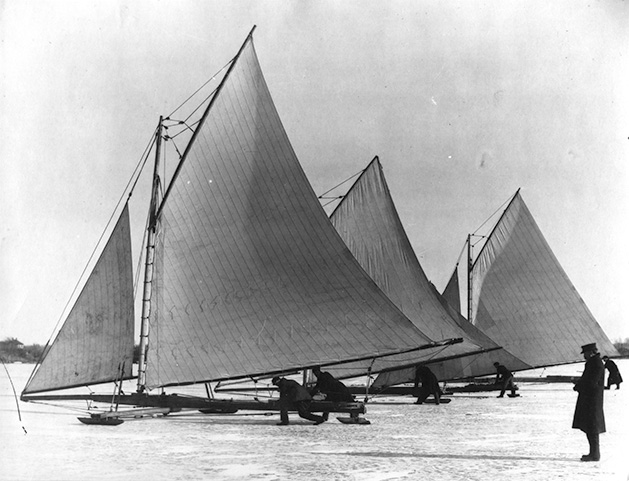
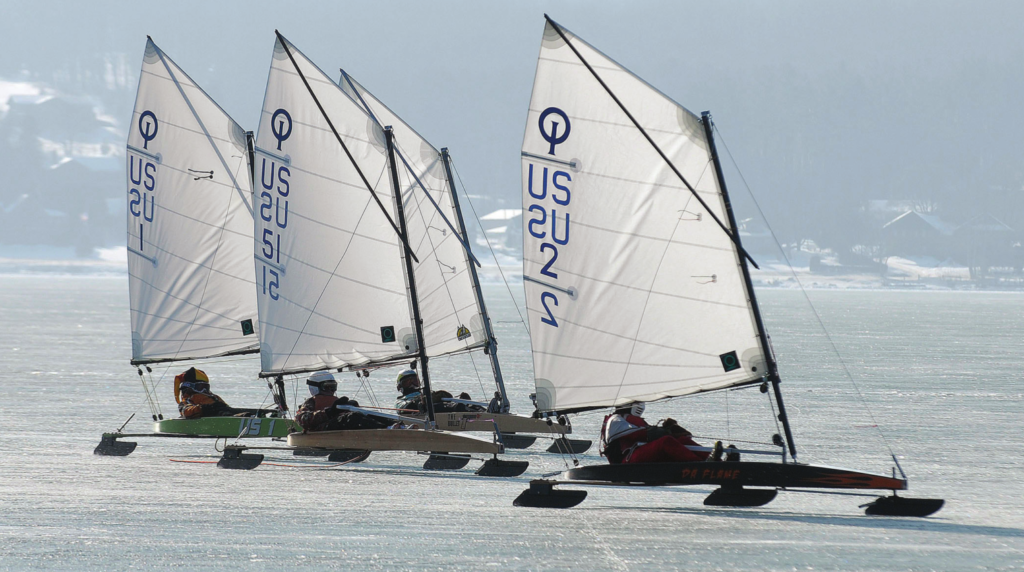
Regarding structural design, today’s ice boats do not dramatically differ from their historical counterparts. Nonetheless, they have become more sophisticated and enhanced their functionality and velocity. Ice boats in the 19th century were large vessels, reaching 69 feet in length. Wealthy boat owners would sail in these vessels with up to seven crew members. However, even at this unnecessarily large size, 19th-century ice boats reached speeds of up to 107 miles per hour—not drastically far behind the current record of 143 miles per hour.
But then, in the early 1900s, smaller ice boats, called scooters, began to make a splash. These were constructed without a rudder and could navigate ice and shallow water. Next, in 1930, front-steering boats replaced the traditional stern-steerer vessels. Finally, in 1970, ice boats began to mirror today’s vessels, trading wood for fiberglass and laminate materials.
What is Ice Sailing Like Today?
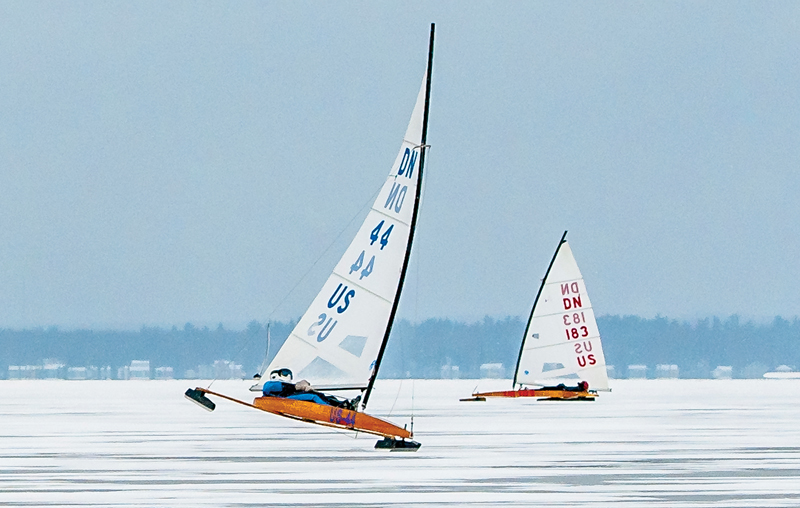
After World War II, ice boating became less prevalent in European countries. However, the winter sport remained popular in the United States and Canada. Ice yachting clubs today stretch from the Northeast to the Midwest and Ontario. Plus, DN (Detroit News) North America hosts many national and international tournaments throughout the year. You can find this year’s schedule here.
Now that you know a little bit more about the history of ice sailing, you may want to try the sport yourself. If so, you can learn all ice boating basics in our Intro to Ice Sailing.

